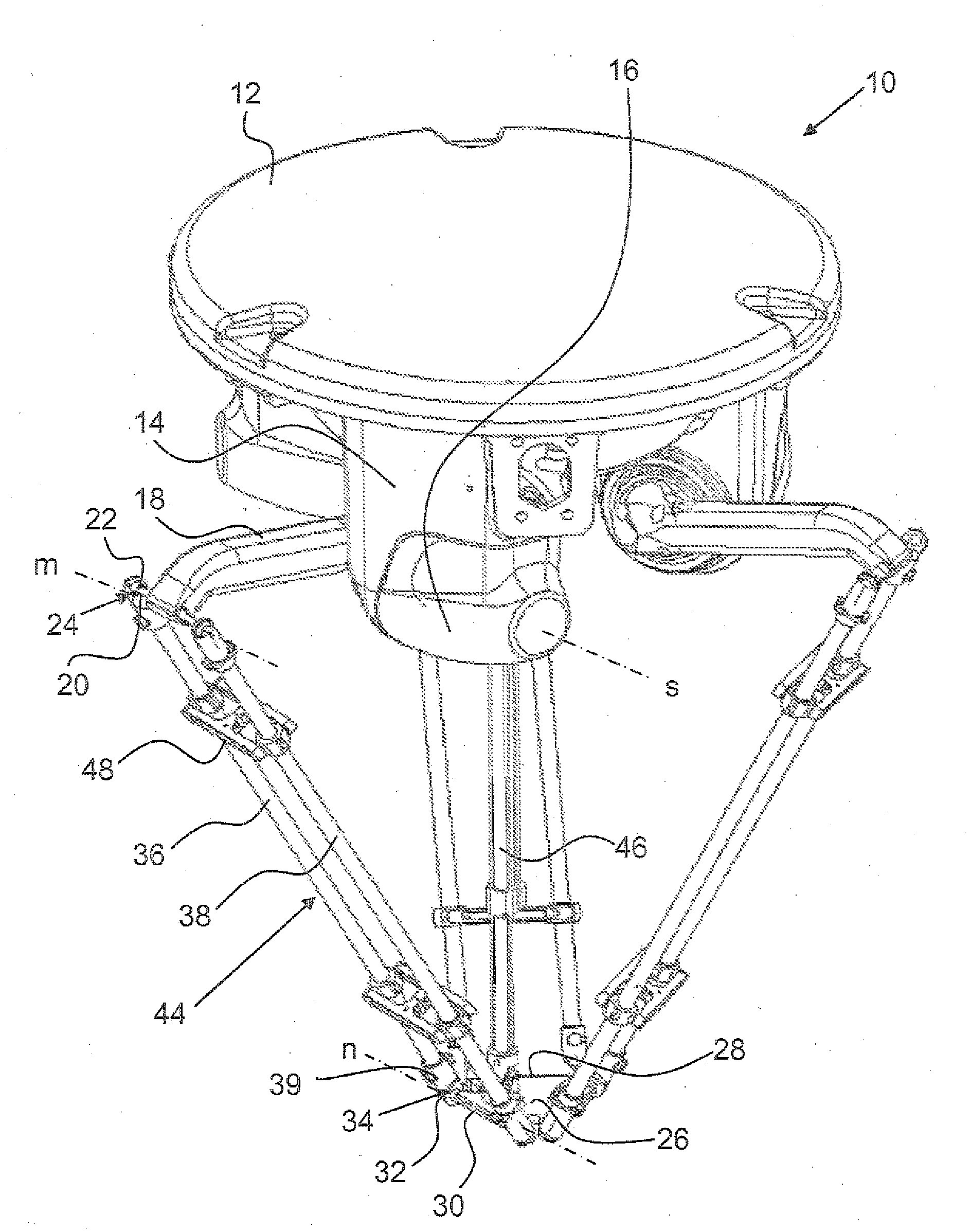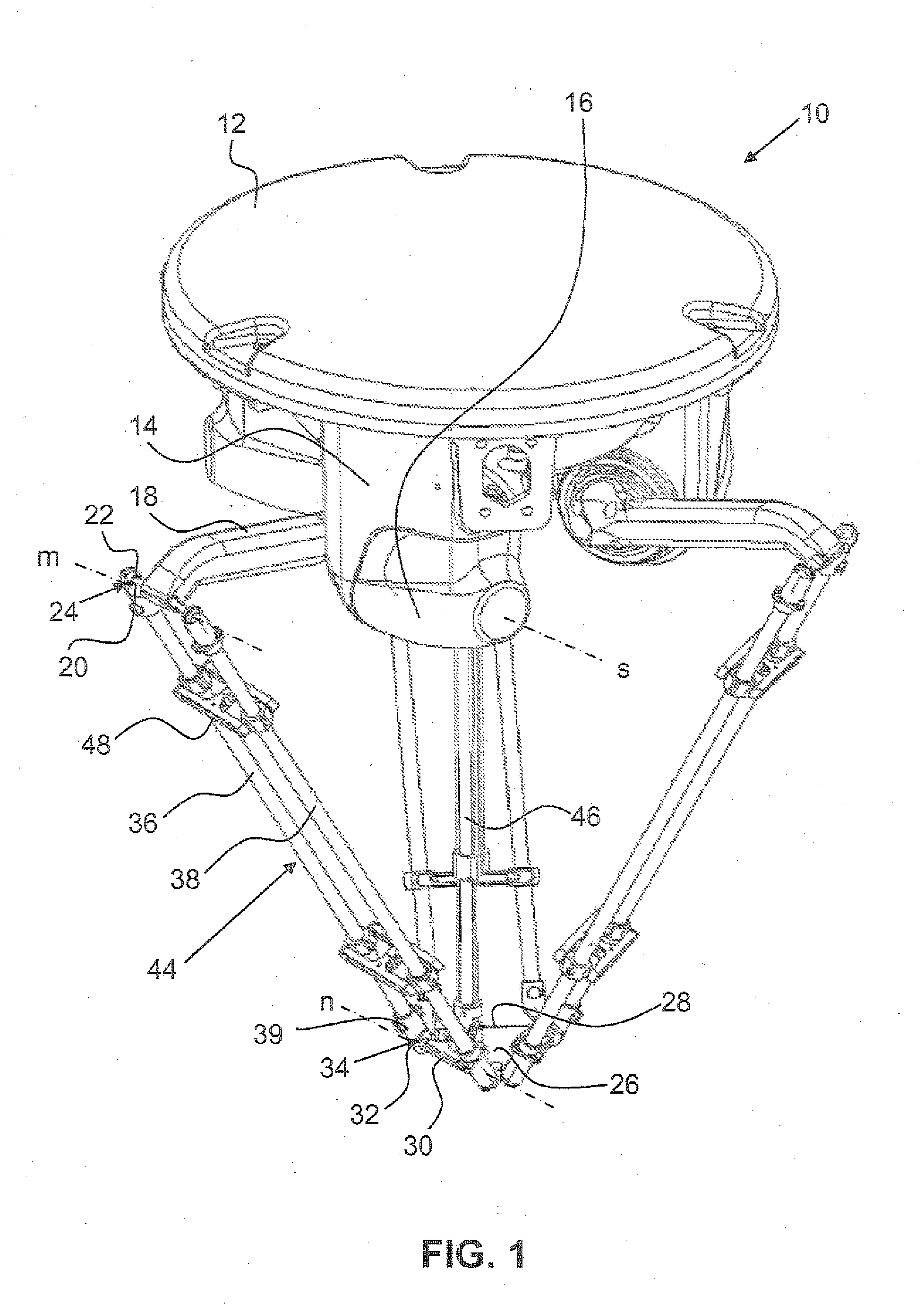Device for displacing and positioning an object in space
a technology for positioning objects and objects, applied in mechanical control devices, process and machine control, instruments, etc., can solve the problems of limited service life prediction, limited dimensional accuracy of prestressing, and inability to ensure the detectability of falling components, etc., to facilitate decoupling, facilitate disassembly, and improve the degree of reliability
- Summary
- Abstract
- Description
- Claims
- Application Information
AI Technical Summary
Benefits of technology
Problems solved by technology
Method used
Image
Examples
Embodiment Construction
[0039]A delta robot 10 shown in FIG. 1 has a base element 12 with a horizontal mounting plane and three mounts 14 protruding from the base element 12. each for accommodating a respective motor / transmission unit 16. Each motor / transmission unit 16 has a transmission shaft that defines a transmission axis s and supports an actuating arm 18 that is able to pivot around the transmission axis s. The three transmission axes s lie in a plane parallel to the mounting plane of the base element 12 and their intersection points constitute the vertices of an equilateral triangle. At the free end of each actuating arm 18, there is a first joint rod 20 that defines a first articulation axis m oriented parallel to the transmission axis s. Each first joint rod 20 has a first joint part 22 at each of its two ends, each belonging to a first ball joint 24. The first joint parts 22 arranged in pairs are situated mirror symmetrically to each other in relation to a vertical plane; the three vertical plan...
PUM
 Login to View More
Login to View More Abstract
Description
Claims
Application Information
 Login to View More
Login to View More - R&D
- Intellectual Property
- Life Sciences
- Materials
- Tech Scout
- Unparalleled Data Quality
- Higher Quality Content
- 60% Fewer Hallucinations
Browse by: Latest US Patents, China's latest patents, Technical Efficacy Thesaurus, Application Domain, Technology Topic, Popular Technical Reports.
© 2025 PatSnap. All rights reserved.Legal|Privacy policy|Modern Slavery Act Transparency Statement|Sitemap|About US| Contact US: help@patsnap.com



